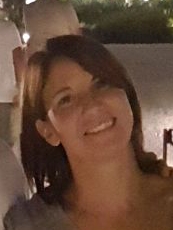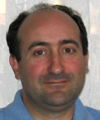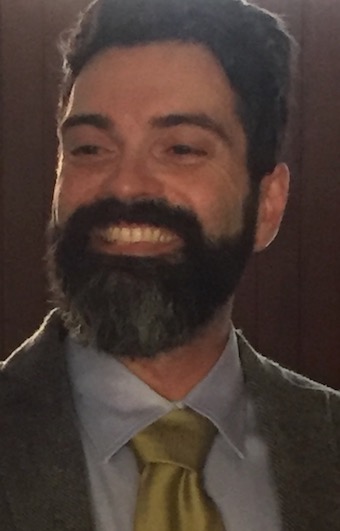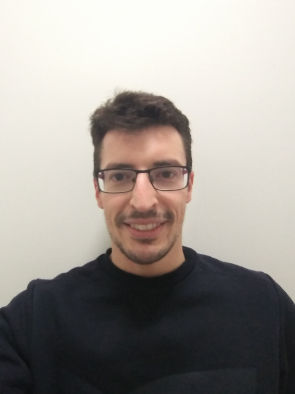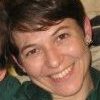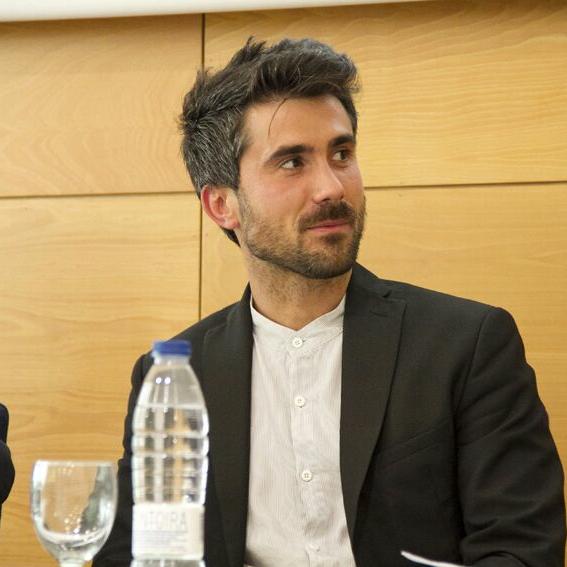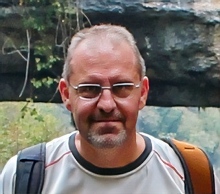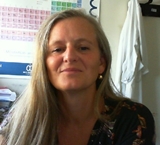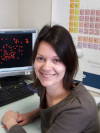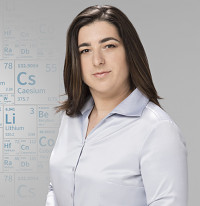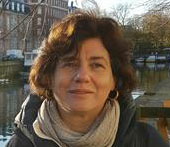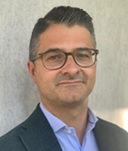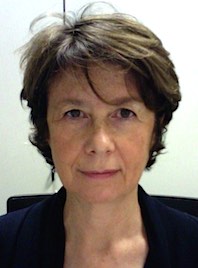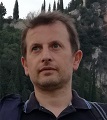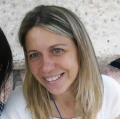Studying at the University of Verona
Here you can find information on the organisational aspects of the Programme, lecture timetables, learning activities and useful contact details for your time at the University, from enrolment to graduation.
Academic calendar
The academic calendar shows the deadlines and scheduled events that are relevant to students, teaching and technical-administrative staff of the University. Public holidays and University closures are also indicated. The academic year normally begins on 1 October each year and ends on 30 September of the following year.
Course calendar
The Academic Calendar sets out the degree programme lecture and exam timetables, as well as the relevant university closure dates..
| Period | From | To |
|---|---|---|
| Primo semestre | Oct 4, 2021 | Jan 28, 2022 |
| Secondo semestre | Mar 7, 2022 | Jun 10, 2022 |
| Session | From | To |
|---|---|---|
| Sessione invernale d'esame | Jan 31, 2022 | Mar 4, 2022 |
| Sessione estiva d'esame | Jun 13, 2022 | Jul 29, 2022 |
| Sessione autunnale d'esame | Sep 1, 2022 | Sep 30, 2022 |
| Session | From | To |
|---|---|---|
| Sessione estiva | Jul 14, 2022 | Jul 14, 2022 |
| Sessione autunnale | Oct 10, 2022 | Oct 10, 2022 |
| Sessione autunnale - dicembre | Dec 5, 2022 | Dec 5, 2022 |
| Sessione invernale | Mar 8, 2023 | Mar 8, 2023 |
| Period | From | To |
|---|---|---|
| Festa di Tutti i Santi | Nov 1, 2021 | Nov 1, 2021 |
| Festa dell'Immacolata Concezione | Dec 8, 2021 | Dec 8, 2021 |
| Festività natalizie | Dec 24, 2021 | Jan 2, 2022 |
| Festa dell'Epifania | Jan 6, 2022 | Jan 7, 2022 |
| Festività pasquali | Apr 15, 2022 | Apr 19, 2022 |
| Festa della Liberazione | Apr 25, 2022 | Apr 25, 2022 |
| Festività Santo Patrono di Verona | May 21, 2022 | May 21, 2022 |
| Festa della Repubblica | Jun 2, 2022 | Jun 2, 2022 |
| Chiusura estiva | Aug 15, 2022 | Aug 20, 2022 |
Exam calendar
Exam dates and rounds are managed by the relevant Science and Engineering Teaching and Student Services Unit.
To view all the exam sessions available, please use the Exam dashboard on ESSE3.
If you forgot your login details or have problems logging in, please contact the relevant IT HelpDesk, or check the login details recovery web page.
Should you have any doubts or questions, please check the Enrollment FAQs
Academic staff
 elisa.artegiani@univr.it
elisa.artegiani@univr.it
 chiara.broccanello@univr.it
chiara.broccanello@univr.it
 flaminia.malvezzicampeggi@univr.it
flaminia.malvezzicampeggi@univr.it
 giulio.mazzi@univr.it
giulio.mazzi@univr.it
 chiara.nardon@univr.it
chiara.nardon@univr.it
 franco.zivcovich@univr.it
franco.zivcovich@univr.it
Study Plan
The Study Plan includes all modules, teaching and learning activities that each student will need to undertake during their time at the University.
Please select your Study Plan based on your enrollment year.
1° Year
| Modules | Credits | TAF | SSD |
|---|
2° Year activated in the A.Y. 2022/2023
| Modules | Credits | TAF | SSD |
|---|
3° Year activated in the A.Y. 2023/2024
| Modules | Credits | TAF | SSD |
|---|
| Modules | Credits | TAF | SSD |
|---|
| Modules | Credits | TAF | SSD |
|---|
| Modules | Credits | TAF | SSD |
|---|
Legend | Type of training activity (TTA)
TAF (Type of Educational Activity) All courses and activities are classified into different types of educational activities, indicated by a letter.
Organic Chemistry (2021/2022)
Teaching code
4S00091
Credits
9
Language
Italian
Scientific Disciplinary Sector (SSD)
CHIM/06 - ORGANIC CHEMISTRY
The teaching is organized as follows:
teoria
laboratorio [1° turno]
laboratorio [2° turno]
laboratorio [3° turno]
laboratorio [4° turno]
Learning outcomes
This course aims to provide students with knowledge of basic organic chemistry and the main organic reactions in preparation for subsequent courses typical of an undergraduate degree in Biotechnology. The course focuses on the recognition of the various classes of compounds and their reactivity, an essential knowledge for understanding the organization of biological systems and for the development of biotechnological applications designed to modify their function. The student will acquire laboratory skills through a series of exercises concerning purification, synthesis and characterization of compounds. Students get acquainted with experimental procedures and techniques, and learn to critically evaluate the outcome of the conducted experimentation.
Program
------------------------
MM: teoria
------------------------
Introduction to organic chemistry: organic chemistry in today’s life. The chemical bond. The molecular geometry. Concepts of acid and base and redox reactions. Resonance. Electronegativity, bonds and chemical reactivity. Intermolecular forces.
Introduction to organic reactions and their mechanisms: thermodynamic relations. Energy diagrams. Kinetics of a reaction; rate and order of a reaction. Homolysis and heterolysis of covalent bonds. Carbocations and carbanions and relative stability. Acidic or basic character of the various functional groups. Effect of changes in structure on acidity and basicity. Inductive effect and resonance. Definition of electrophilic and nucleophilic reagents. Concept of regio- and stereo-selectivity of an organic reaction.
Alkanes and Cycloalkanes: structure and IUPAC nomenclature, alkyl radicals. Structural isomers. Isomerism and physical properties. Conformational isomerism: definition and examples via energy diagrams (ethane and butane). The cycloalkanes: relative stability and strain. Cyclopentane and cyclohexane. Conformation of cyclohexane and substituted cyclohexanes: axial and equatorial hydrogens, the cis/trans stereoisomerism. Conformational analysis.
Stereochemistry: constitutional isomers and stereoisomers. Enantiomers and diastereoisomers. Chirality Relations between configurational stereoisomers: enantiomers and racemates. Polarized light and optical activity. Representation rules of chiral compounds (R, S or D, L). Projective structures of Fisher. Compounds with multiple stereocenters: diastereoisomers and mesoforms. Stereoisomerism in cyclic compounds: configurations and conformations. Resolution of a racemate. The stereoisomerism of cyclic compounds.
Alkenes and alkynes: IUPAC nomenclature; vinyl and allyl groups. Geometric isomerism and physical-chemical properties; stability of alkenes with different substitution. Reactivity: electrophilic additions of halogen acid, water, , halogen. Mechanism, stereochemistry and kinetics of the reactions, Markovnikov's rule. The formation of halohydrins. Oxidation of double bonds. Hydrogenation reaction: catalysis, stereoselectivity of the hydrogenation reaction. Alkynes: definitions and nomenclature; acidity of alkynes. Electrophilic additions to the triple bond, mechanism and regioselectivity. Hydrogenation of the triple bond. Addition of water: reaction products. Main methods of synthesis of alkenes and alkynes.
Nucleophilic substitution and elimination at saturated carbon: kinetics and mechanism of SN1 and SN2 reactions; competition between the two mechanisms; stereochemistry of reactions. Comparisons between various nucleophiles. Steric effect, polarizability. Solvents in substitution reactions. Leaving groups. Elimination reactions: kinetics and mechanism of reactions E1 and E2; regioselectivity and stereochemistry. Competition between substitution and elimination reactions. The chemistry of alkyl halides: preparation and reactivity.
Alcohols, ethers and epoxides: structure and nomenclature; physico-chemical properties of alcohols and ethers. Preparation of alcohols. The reactions of alcohols. Conversion of alcohols to alkyl halides. Preparation of ethers (Williamson synthesis). Reaction of halohydrins for the preparation of epoxides (intramolecular nucleophilic substitution). Rupture of the ether bond. Opening of epoxides.
Aldehydes and ketones: a carbonyl group, its structure and reactivity towards electrophilic and nucleophilic reagents. Nomenclature and physical properties of aldehydes and ketones. Main methods of synthesis of aldehydes and ketones. Nucleophilic addition reaction: formation of hemiacetal and acetal, imines and enamines. Reactions with Grignard reagents. Carbonyl compounds as acids and bases (enols and enolates, tautomerism). Aldol condensation reactions. Regioselective formation of enolates. The conjugated unsaturated systems: the allyl cation: forms of resonance and stability. Conjugated dienes and their stability. The electrophilic attack to conjugated dienes: 1,2 and 1,4 addition.
The chemistry of aromatic compounds: benzene, Kekulé structures, aromaticity in arenes and heterocyclic compounds. Huckel rule. Nomenclature and properties of aromatic compounds: halides, carboxylic acids, phenols, amines, aromatics polycondensated. Reaction of aromatic electrophilic substitution (nitration, halogenation, sulfonation, Friedel-Crafts reactions): mechanism and kinetic data. Orientation in the substitution reaction of rings with a substituent. Activating and deactivating groups, orientation in the substitution. Substitution on rings with more than one substituent.
Carboxylic acids and their derivatives: properties of the carboxyl group. Acidity. Nomenclature and physical-chemical properties. Preparation of carboxylic acids. Transformation of carboxylic acids in the major derivatives: halides, anhydrides, amides and esters. Reactivity of the carboxylic group: nucleophilic addition-elimination of carbon acyl. Preparation of acid chlorides and anhydrides. Preparation of esters: the mechanism of the reaction esterification of Fisher. Hydrolysis of acid derivatives. The β-dicarbonyl compounds: the Claisen condensation.
Amines: structure. Nomenclature and physical-chemical properties. Basicity. Heterocyclic compounds: nomenclature. Heterocyclic aromatic compounds. Nitrogen heterocycles: pyrrole and pyridine. Basicity of pyrrole and pyridine. Nucleotides and nucleic acids.
Carbohydrates: structure and distribution. Stereochemistry of sugars. Fischer projection. Determination of the absolute configuration. The mutarotation. Reaction of formation of hemiacetals: cyclic structures of monosaccharides. Haworth formulas. Anomeric effect. Formation of glycosides. Oxidation reactions of monosaccharides: oxidation with Benedict's reagent and Tollens. Reducing sugars. Reduction to alditols. Main monosaccharides: glucose and fructose. Disaccharides lactose, maltose and sucrose. Polysaccharides: starch and cellulose.
Lipids: waxes, fats, oils, soaps, fosfolipid, eicosanoids, terpenoids, steroids.
Amino acids and peptides: structure, properties and stereochemistry. Classification of amino acids present in proteins. Amino acids such as acids and bases. Determination of the structure of the peptides: primary, secondary, tertiary and quaternary. Degradation of proteins into peptides and amino acids: acid hydrolysis, enzymatic degradation.
------------------------
MM: laboratorio
------------------------
The practical experiences include key issues for an organic chemistry laboratory, for example, methods of purification by crystallization, separation of a three-component mixture with different acid-base properties, identification of compounds through the melting point, simple chemical reactions, purification by distillation , recognition of carbohydrates essays, introduction to polarimetry and spectroscopy nods for molecular analysis.
THE METHOD OF DELIVERY OF THE DIDACTICS WILL ADAPT TO THE CONTINGENT SITUATIONS RELATED TO THE HEALTH EMERGENCY
Bibliography
Examination Methods
------------------------
MM: teoria
------------------------
The exam consists of a written verification of the level of knowledge on organic chemistry and the ability to apply the basic principles to specific cases. The student will be asked to properly represent molecules using standard conventions, recognize isomerism, identify the reactive groups and develop reaction mechanisms.
------------------------
MM: laboratorio
------------------------
For each laboratory experience, the student will be requested to write a brief report on the results and a critical commentary. Understanding of practical experiences will be verified through questions included in the written test of the theoretical course.
VARIATIONS WILL BE POSSIBLE ON THE METHOD OF EXAMINATION ON THE BASIS OF THE CONDITIONS SET BY THE HEALTH EMERGENCY
Type D and Type F activities
Le attività formative di tipologia D sono a scelta dello studente, quelle di tipologia F sono ulteriori conoscenze utili all’inserimento nel mondo del lavoro (tirocini, competenze trasversali, project works, ecc.). In base al Regolamento Didattico del Corso, alcune attività possono essere scelte e inserite autonomamente a libretto, altre devono essere approvate da apposita commissione per verificarne la coerenza con il piano di studio. Le attività formative di tipologia D o F possono essere ricoperte dalle seguenti attività.
1. Insegnamenti impartiti presso l'Università di Verona
Comprendono gli insegnamenti sotto riportati e/o nel Catalogo degli insegnamenti (che può essere filtrato anche per lingua di erogazione tramite la Ricerca avanzata).
Modalità di inserimento a libretto: se l'insegnamento è compreso tra quelli sottoelencati, lo studente può inserirlo autonomamente durante il periodo in cui il piano di studi è aperto; in caso contrario, lo studente deve fare richiesta alla Segreteria, inviando a carriere.scienze@ateneo.univr.it il modulo nel periodo indicato.
2. Attestato o equipollenza linguistica CLA
Oltre a quelle richieste dal piano di studi, per gli immatricolati dall'A.A. 2021/2022 vengono riconosciute:
- Lingua inglese: vengono riconosciuti 3 CFU per ogni livello di competenza superiore a quello richiesto dal corso di studio (se non già riconosciuto nel ciclo di studi precedente).
- Altre lingue e italiano per stranieri: vengono riconosciuti 3 CFU per ogni livello di competenza a partire da A2 (se non già riconosciuto nel ciclo di studi precedente).
Tali cfu saranno riconosciuti, fino ad un massimo di 6 cfu complessivi, di tipologia F se il piano didattico lo consente, oppure di tipologia D. Ulteriori crediti a scelta per conoscenze linguistiche potranno essere riconosciuti solo se coerenti con il progetto formativo dello studente e se adeguatamente motivati.
Gli immatricolati fino all'A.A. 2020/2021 devono consultare le informazioni che si trovano qui.
Modalità di inserimento a libretto: richiedere l’attestato o l'equipollenza al CLA e inviarlo alla Segreteria Studenti - Carriere per l’inserimento dell’esame in carriera, tramite mail: carriere.scienze@ateneo.univr.it
3. Competenze trasversali
Scopri i percorsi formativi promossi dal TALC - Teaching and learning center dell'Ateneo, destinati agli studenti regolarmente iscritti all'anno accademico di erogazione del corso https://talc.univr.it/it/competenze-trasversali
Modalità di inserimento a libretto: non è previsto l'inserimento dell'insegnamento nel piano di studi. Solo in seguito all'ottenimento dell'Open Badge verranno automaticamente convalidati i CFU a libretto. La registrazione dei CFU in carriera non è istantanea, ma ci saranno da attendere dei tempi tecnici.
4. Periodo di stage/tirocinio
Oltre ai CFU previsti dal piano di studi (verificare attentamente quanto indicato sul Regolamento Didattico): qui informazioni su come attivare lo stage.
Verificare nel regolamento quali attività possono essere di tipologia D e quali di tipologia F.
Insegnamenti e altre attività che si possono inserire autonomamente a libretto
| years | Modules | TAF | Teacher |
|---|---|---|---|
| 3° | LaTeX Language | D |
Enrico Gregorio
(Coordinator)
|
| 3° | History and Didactics of Geology | D |
Guido Gonzato
(Coordinator)
|
| years | Modules | TAF | Teacher | |
|---|---|---|---|---|
| 1° | Subject requirements: basic mathematics and physics | D | Not yet assigned | |
| 3° | Python programming language | D |
Giulio Mazzi
(Coordinator)
|
|
Career prospects
Module/Programme news
News for students
There you will find information, resources and services useful during your time at the University (Student’s exam record, your study plan on ESSE3, Distance Learning courses, university email account, office forms, administrative procedures, etc.). You can log into MyUnivr with your GIA login details: only in this way will you be able to receive notification of all the notices from your teachers and your secretariat via email and soon also via the Univr app.
Graduation
List of theses and work experience proposals
| theses proposals | Research area |
|---|---|
| Studio delle proprietà di luminescenza di lantanidi in matrici proteiche | Synthetic Chemistry and Materials: Materials synthesis, structure-properties relations, functional and advanced materials, molecular architecture, organic chemistry - Colloid chemistry |
| Multifunctional organic-inorganic hybrid nanomaterials for applications in Biotechnology and Green Chemistry | Synthetic Chemistry and Materials: Materials synthesis, structure-properties relations, functional and advanced materials, molecular architecture, organic chemistry - New materials: oxides, alloys, composite, organic-inorganic hybrid, nanoparticles |
| Dinamiche della metilazione del DNA e loro contributo durante il processo di maturazione della bacca di vite. | Various topics |
| Risposte trascrittomiche a sollecitazioni ambientali in vite | Various topics |
| Studio delle basi genomico-funzionali del processo di embriogenesi somatica in vite | Various topics |
Attendance
As stated in the Teaching Regulations for the A.Y. 2022/2023, attendance is not mandatory. However, professors may require students to attend lectures for a minimum of hours in order to be able to take the module exam, in which case the methods that will be used to check attendance will be explained at the beginning of the module.


 +39 045 802 7949
+39 045 802 7949


